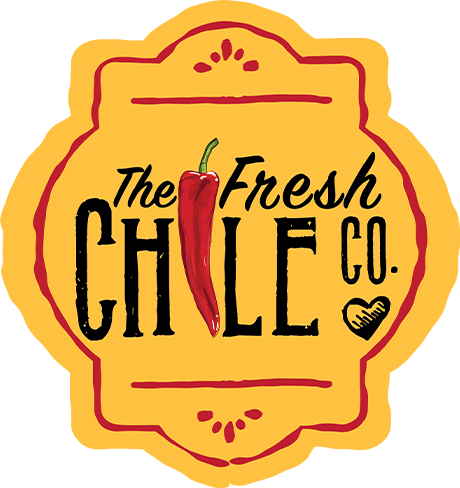(Randy)
So this is Randy with the Fresh Chile Company and this is Marshall with Adams produce. You oversee the farms down here North of Hatch.
(Marshall)
Yeah
(Randy)
Right here in the Garfield area in Garfield for Scottie Adams. So tell us about this year, what's going on.
(Marshall)
It's been a chaotic year. We got the chile transplants in and then right as we were planting them, it was still, you know, freezing, so it was still cold. So the, the temperatures hasn't, you know, the ground temperatures and the overall temperatures haven't been high this year. So it's just been a slow and growing season. And then a week ago, you know, we got hail on the chile up here. You can't really tell just looking at it but the plants are beat up.
(Randy)
Yeah, you can if you get close and you know, we got some of these leaves are you know, trash kind of beat up. What, what, what does that do to the plant?
(Marshall)
It just slows it down and it, you know, it'll, you know, push our, our projected harvest date back. Of course, because, you know, you're slowing the plant down. But, you know, as long as it doesn't get held to a stick chile is a very resilient plant and it'll grow out of it. And, we just gotta make sure we take care of it now and it doesn't get sick on us. But on top of the hail, you know, we had almost four inches of rain in 10 days up here, which is almost four inches like a half of our annual rainfall, you know, 10 days. So it's, it has been, it's been a very chaotic year, but by God's grace, we're gonna make it through it though.
(Randy)
Tell me, you expected to harvest when?
(Marshall)
By the first part of July and it might not, it might still be just right there because if you look, if you really look at the plant, the flowers and what our crop is, is still on there and then it completely knock it off. You know, you see that and that's, that's our, that's our crop. That's our first pick all that throughout each of these plants. So, you know, it, when it, when I was saying it might push us back because it just, the plant has to, you know, heal a little bit and come out of it. But as far as your chile, there's your chile, it's still there. So, I mean, when I say it might push us back, it might just be a few days. It's not gonna be a month by any measure. So, yeah, but, but like, you know, normally we've harvested, you know, at the first part of July before and I really hope we get there. But if we're, you know, anywhere from the fifth to the 10th, that'll be good still, you know, just earlier, that's the whole reason why we're doing this. We're trying to get in on the early market as quick as we can
(Randy)
We do the, the transplants come in and, they, they plant them so that they get you, what about a two week head start?
(Marshall)
Oh, no, it's probably a month.
(Randy)
So instead of August 15th, we're gonna harvest in July.
(Marshall)
And I mean, we've had, we've had chile on the fourth of July before, you know, not commercially for the big plants, picking it, you know, but you can go out and make rellenos for Fourth of July
(Randy)
So, I like to tell our customers, that making a chile relleno from a fresh chile is kind of like, pulling a trout out of the lake or a salmon out of the ocean and taking it, cook it right there.
(Marshall)
There is, it is something special. when this crop is harvested, it's a fresh crop and that's the whole deal. People, it, this crop will be harvested and roasted all within hours. It's fresh as fresh as you're gonna get. And then if you can eat it before it's ever frozen. It's even better. It's just the taste. And I, you know, my favorite time of the year is chile season. You know, it's the hardest time of the year. It's the most work. But the, it's awesome to get to walk out here and eat fresh chile every day.
